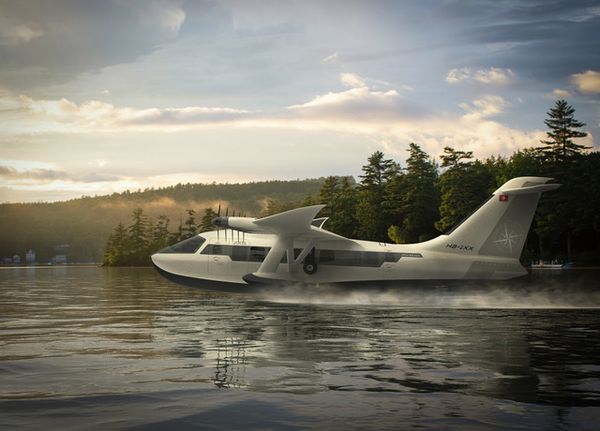On the afternoon of Friday, August 9th, 2024, presidential candidate Donald Trump was onboard his private 757 en route to Bozeman, Montana, for a rally.
However, the aircraft diverted to Billings due to a "mechanical issue" with the Boeing jet, forcing an emergency landing at the south-central Montana airport with no further issues. Trump later boarded a second jet to reach Bozeman that evening.
What Happened?
While the live data of this flight cannot be tracked and/or replayed, the basis of the flight is that while en route to Bozeman for an evening political rally, an unknown mechanical issue forced the jet to land short of its intended destination by about 120 miles.
Since Billings is to the east of Bozeman, it can be inferred that Trump was travelling west for this flight, although the origin of the flight has also not been released. When on the ground in Billings, Trump released a short video that he had landed in Montana but did not specify that he was in Billings and not Bozeman's intended destination.
Later in the day, Trump was seen boarding a secondary private jet to reach Bozeman for the rally scheduled that evening, albeit an hour and a half late.
Considering 150 miles is not that much of a distance for a 757 (likely can be flown in under 20-25 minutes), the issue had to have been important enough to prompt an immediate diversion rather than finishing the flight.
While the exact cause has not been released by the Trump Campaign, a few possible faults that come to mind (that would require immediate action) include cabin pressurization, fuel issues, flight control surface malfunctions, or issues with the aircraft's navigational systems.
These problems can escalate quickly if not addressed promptly, so getting on the ground quickly becomes the flight crew's primary focus when a scenario like this occurs.
Trump's 757
Donald Trump's private Boeing 757-200, registered N757AF and nicknamed "Trump Force One," is a 33.4-year-old aircraft, making it one of the older 757s still in active service.

While robust maintenance programs can keep aircraft flying well past an average service life (about 20-30 years in the airlines), older aircraft tend to be more temperamental as the airframe ages.
Especially for an aircraft that initially flew for an airline before going into the private sector, where hours accumulate slowly. This 757 was no exception, being originally built in 1991 for Denmark's Sterling Airways.
In, 1993 it was transferred to Mexican airline TAESA, and flew with them until 1996, when it was sold into private ownership. Donald Trump's firm didn't acquire the airframe until 2010, so the usage of the 757 during its first 14 years of private ownership is rather unknown.
Regardless, a 33-year-old aircraft can present challenges with maintenance, and unexpected issues can arise at any time. However, the aircraft landed safely once the diversion was initiated, and in an emergency scenario like this, that is the most important take-away in this entire story.
This is a developing story, and may be updated as more information is released.
Austrian Airlines Abruptly Terminates Wet Lease with Braathens Regional Airlines » Alaska Airlines Defends Home Turf with 7 Strategic New Routes for 2026 » JetBlue Opens First-Ever ‘BlueHouse’ Lounge at JFK Terminal 5 »
Comments (1)
 Geoffrey
Given the incomplete information I would say that the mechanical issue was in the navigation. They landed at the wrong airport. Are you Earing me?
Geoffrey
Given the incomplete information I would say that the mechanical issue was in the navigation. They landed at the wrong airport. Are you Earing me?
Add Your Comment
SHARE
TAGS
NEWS donaldtrumpboeing757emergencydiversionlandingmontanarallypresidentRECENTLY PUBLISHED
 End of an Era: JetBlue's Farewell to the Embraer E190
On September 9, 2025, after nearly two decades of service, JetBlue Airways brought an end to an era with the retirement of its Embraer E190 fleet.
INFORMATIONAL
READ MORE »
End of an Era: JetBlue's Farewell to the Embraer E190
On September 9, 2025, after nearly two decades of service, JetBlue Airways brought an end to an era with the retirement of its Embraer E190 fleet.
INFORMATIONAL
READ MORE »
 Cities in the Sky: The Future Built on eVTOL Flight
Imagine stepping out of your office, walking to a nearby rooftop, and moments later lifting off vertically into the sky — no airport lines, no traffic, just a silent hop across the city. This future is no longer science fiction; it's the foundation of what could be aviation's biggest innovation since the jet age.
INFORMATIONAL
READ MORE »
Cities in the Sky: The Future Built on eVTOL Flight
Imagine stepping out of your office, walking to a nearby rooftop, and moments later lifting off vertically into the sky — no airport lines, no traffic, just a silent hop across the city. This future is no longer science fiction; it's the foundation of what could be aviation's biggest innovation since the jet age.
INFORMATIONAL
READ MORE »
 The Runway is Obsolete: Jekta Swiss is Resurrecting the Flying Boat for the 21st Century
AeroXplorer sat down with George Alafinov, CEO & Co-founder of Jekta Swiss. In conversation, he discussed the company's unique value proposition and how he sees his aircraft revolutionizing the amphibious aircraft industry.
STORIES
READ MORE »
The Runway is Obsolete: Jekta Swiss is Resurrecting the Flying Boat for the 21st Century
AeroXplorer sat down with George Alafinov, CEO & Co-founder of Jekta Swiss. In conversation, he discussed the company's unique value proposition and how he sees his aircraft revolutionizing the amphibious aircraft industry.
STORIES
READ MORE »



